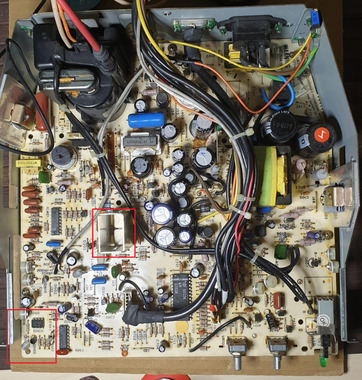Reply 20 of 25, by Deunan
x86_guy wrote on 2024-04-08, 20:11:The issue now - at cold startup the image is vertically shrunk and vertical linearity isn't ok. Those issues self sorted after a minute or so of the monitor running - Any directions?
There is no bottom side photo of the very front of the PCB (it's obscured by monitor case) so I can't be sure, but the vertical driver is that thing under the heatsink and either the oscillator part is also in there, or perhaps the 555 in the corner is the oscillator. In that case my bet is the round foil capacitor in the corner is setting the free-running vertical frequency.
The cap is not really suspect because these don't go bad, and if they do it's not really temperature dependent. But the soldering could be cracked so check that. Without a scope it's just a guesswork, you can't tell if the problem is in the oscillator or the yoke driver. Since it fixes itself with time, and pretty fast too, I'm tempted to blame the driver because it will get warm much faster then 555 chip - but then again the 555 are all clones of better or worse quality and those can die or break in weird ways with time.
There is also an electrolytic cap on the bottom of the PCB, under the driver, where it is hot, so do check or even try replacing that one.
This is perhaps a good case for the freeze spray - if you have one - you could try cooling both parts once the linearity gets good to see which one will break it again. But make sure you don't hit the CRT, the glass in the neck is thin and could easily crack due to temperature shock. I'd also avoid touching the heatsink with bare fingers, not because it's so hot but there might be unsafe (or at least unpleasant) voltages present. The 555 should be safe to touch.
